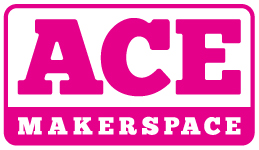Please note that this post is a draft! We are adding pictures and video shortly.
This practice kit is similar to the kit used in our Sewing 101 Bootcamp course with a few twists and extras. This kit will help you to further develop your sewing skills. This kit is designed to take you through the key functions of a sewing machine.
This kit contains:
- 6 Practice sewing sheets (paper). They get progressively more complex and help you gain control on a sewing machine.
- 4 pre-cut pieces of practice fabric
- 2 pre-cut fabric pieces for creating a pin cushion. Stuffing is available in the Fiber Fill, Stuffing and Batting bin in Textiles.
- Knit Fabric pieces for practice
- Elastic
Set-Up
Set up your sewing machine using a standard needle & standard sewing machine foot (Foot A).
Need a reminder on basic machine operations? Check out the manual in each machine cart or linked here.
Using the practice sheets
Straight lines
- On the first few lines practice doing a back stitch at the beginning and end of each line
- On the next few lines sew both on the printed line and next to the printed line using a 1/4 or 1/2 inch seam allowance. Try adjusting your stitch length for each line.
- Next try a few lines of zig-zag stitching. Vary the stitch width and length to see how that changes the density of the zig-zag.
Rectangle
- Using a 2.5 stitch length and a straight stitch, sew up to the corner of the square, then with your needle down, rotate the paper and continue to sew down the next side of the shape.
- Use the hand wheel to manually advance one stitch to perfectly hit the corner of your square if needed.
Triangle & Octagon
- You can use a similar method to the rectangle, practicing pivoting
- Using either a straight or zig-zag stitch and practice on the diamond shape, with turns in the corners
Circles
- Start with the largest circle and then progress to the smaller circle as it will be more challenging.
- Using a 2.5 stitch length and a straight stitch, align the edge of your presser foot with the printed line of the circle. Sew around the circle slightly rotating the paper as you go to stay aligned.
- If you start to sew off course, no worries! With your needle down, pivot your paper slightly, take a stitch, and repeat until you get back on course smoothly.
Fabric Practice
This next lesson is practicing sewing a consistent seam allowance.
Note: Right sides together means good/pretty/printed sides together! You’ll see this on patterns a lot or sometimes abbreviated as RST.
- Align the two hexagon-shaped pieces of fabric, right sides together, and practice sewing different seam allowances. Use the marks on the stitch plate to align the fabric and sew a 1/4, 3/8 or 5/8 inch seam allowance along the edge of your pieces.
- Align the two circle-shaped pieces of fabric, right sides together, and practice sewing different seam allowances. Use the marks on the stitch plate to align the fabric and sew a 1/4, 3/8 or 5/8 inch seam allowance along the edge of your pieces.
- Alternate Option: Make a shaped pin cushion or tiny pillow using the directions below!
Making your pin cushion
Make your first finished project!
Fabric Squares: Now that you’ve mastered each shape on paper, practice on fabric!
- Align the two squares, right sides together.
- Mark a 2-inch area in the middle of one side. You will not be sewing here and it’s important that it not be at a corner.
- Sew from one mark, all the way around the piece, with a 3/8th inch seam allowance stopping at the second mark. Don’t forget to back-stitch at the beginning and end.
- Next snip your threads and the corners of the piece.
- Turn the piece right side out, using a dull knitting needle or chopstick to poke out the corners.
- Stuff with batting and hand stitch the opening closed.
Check out these video tutorials for directions on sewing your pin cushion and using a ladder stitch to close it up!
